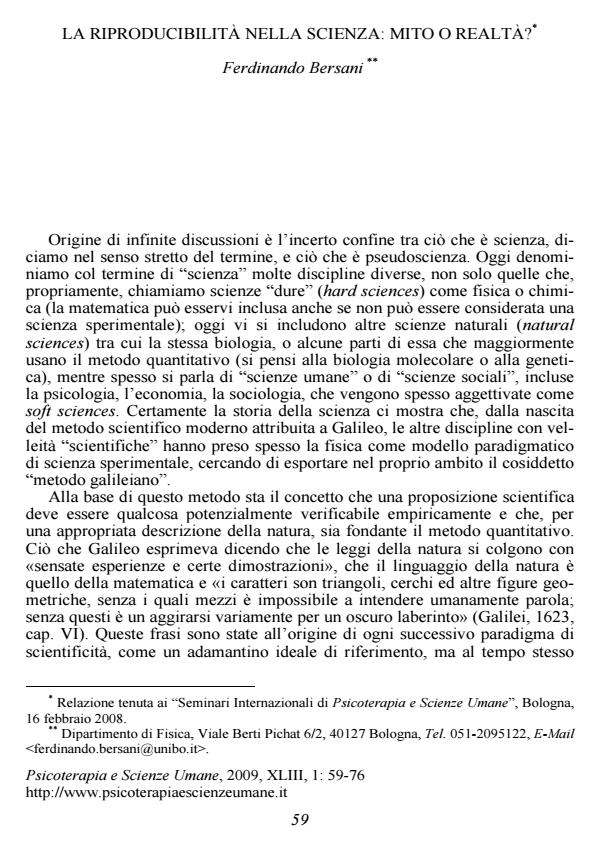La riproducibilità nella scienza: mito o realtà?
Journal title PSICOTERAPIA E SCIENZE UMANE
Author/s Ferdinando Bersani
Publishing Year 2009 Issue 2009/1
Language Italian Pages 18 P. 59-76 File size 124 KB
DOI 10.3280/PU2009-001004
DOI is like a bar code for intellectual property: to have more infomation
click here
Below, you can see the article first page
If you want to buy this article in PDF format, you can do it, following the instructions to buy download credits

FrancoAngeli is member of Publishers International Linking Association, Inc (PILA), a not-for-profit association which run the CrossRef service enabling links to and from online scholarly content.
Replicability in science: myth or reality? - Replicability, which is generally considered one of the cornerstones of true science, far from being an obvious precondition for any experimental investigation is often a difficult achievement requiring a sufficient knowledge of the phenomenon under study. Moreover, the degree of replicability depends on the objects and/or phenomena under investigation. Even in physics, often considered a paradigmatic "hard science", the level of reproducibility is often problematic and, in any case, it depends on the type of phenomena and on the level of their description. The problem of reproducibility is entangled with scientific methodology, in particular with induction and abduction. The theory of demarcation between science and non science is hard to clarify, and it is particularly critical for disciplines, generally indicated as "soft sciences" or "humanities", that include some aspects of psychology and psychotherapy. [KEY WORDS: replicability, scientific method, induction, abduction, psychology]
- Change After Psychotherapy (CHAP): un metodo di valutazione del cambiamento alla fine della psicoterapia Rolf Sandell, in PSICOTERAPIA E SCIENZE UMANE 4/2015 pp.595
DOI: 10.3280/PU2015-004004
Ferdinando Bersani, La riproducibilità nella scienza: mito o realtà? in "PSICOTERAPIA E SCIENZE UMANE" 1/2009, pp 59-76, DOI: 10.3280/PU2009-001004